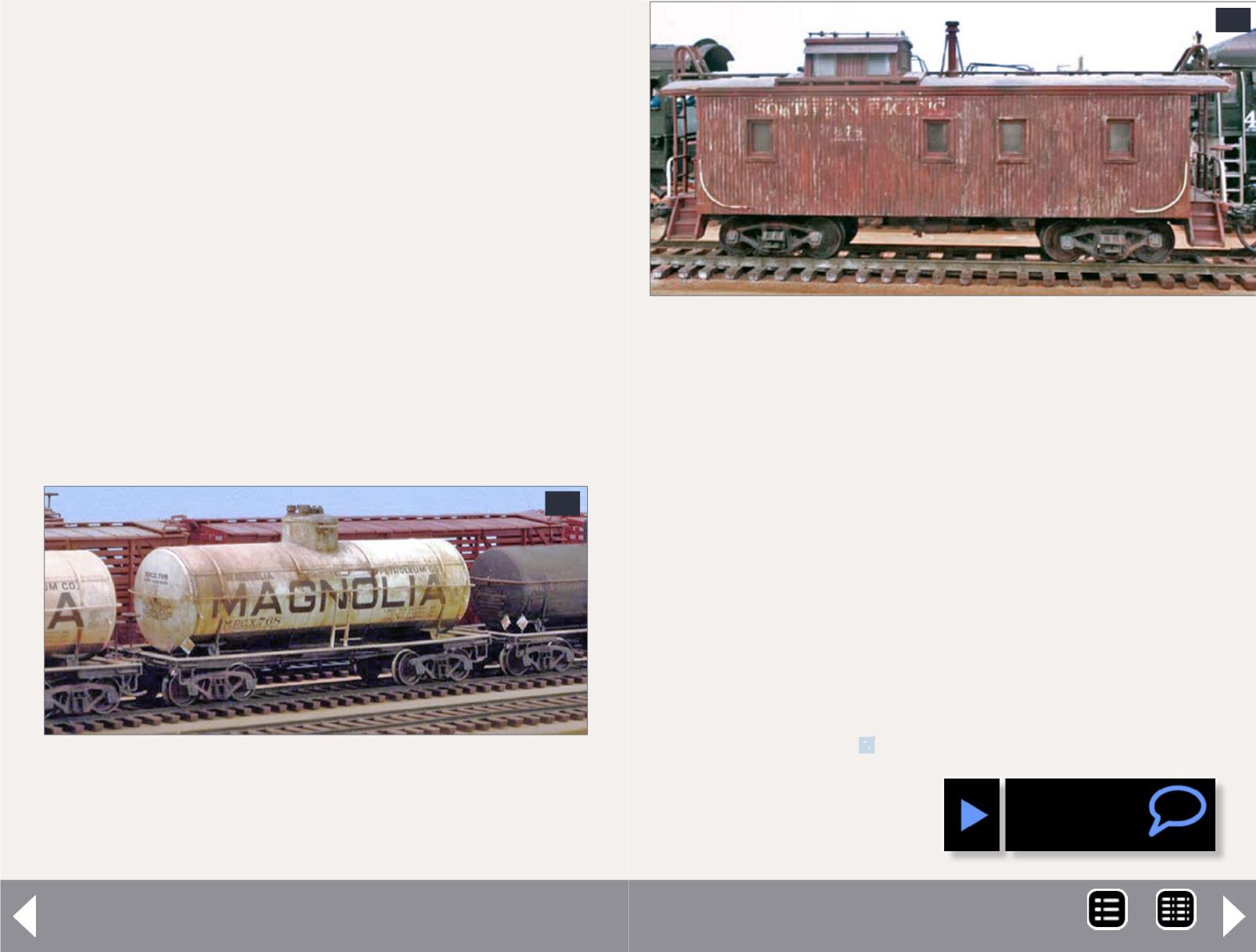
Car roof
This part of the car is very visible on most layouts. A light coat
of dust and dirt will improve realism here if you don’t want to
do heavy weathering. By the way, dust from the layout is not
weathering!!!
Car body sides and ends
Add a light dust on the top and darker grime along the running
boards. Make sure to get the weathering material on the body
under the ladders and grabs to avoid weathering shadows.
Some weathering examples
I am by no means a rolling stock weathering expert. These cars
would no doubt get plenty of “helpful suggestions” if posted on
the weathering forums around the web. I am sharing several of
Batch-building freight cars - 13
them here as average examples of what is possible with some
easy-to-execute, common techniques.
Next month I will walk us through the batch building of four
Proto 2000 stockcars.
18: This P2K tank was weathered before assembly with
artist oils. Engine black and rust were applied to the
frame and trucks. A final coat of weathering powder
was then applied to the top of the tank after assembly.
21
22
22: Oops! This car has certainly seen better days and
could be taken as a cautionary tale to those who might
tend to get too carried away with weathering. While
“rolling wrecks” were on the rosters of most railroads,
they were often rusting away on sidings, and not in
service. A Walther’s C-30 wood caboose was painted
with gray paint and then had brown applied, and
scratched back to produce the rotting /wood peeling
paint effect. It has been pointed out to me that the
SP would have removed a car in this condition from
service. Oddly, this caboose has been very popular
with crews during operating sessions.
MRH-Mar 2014


